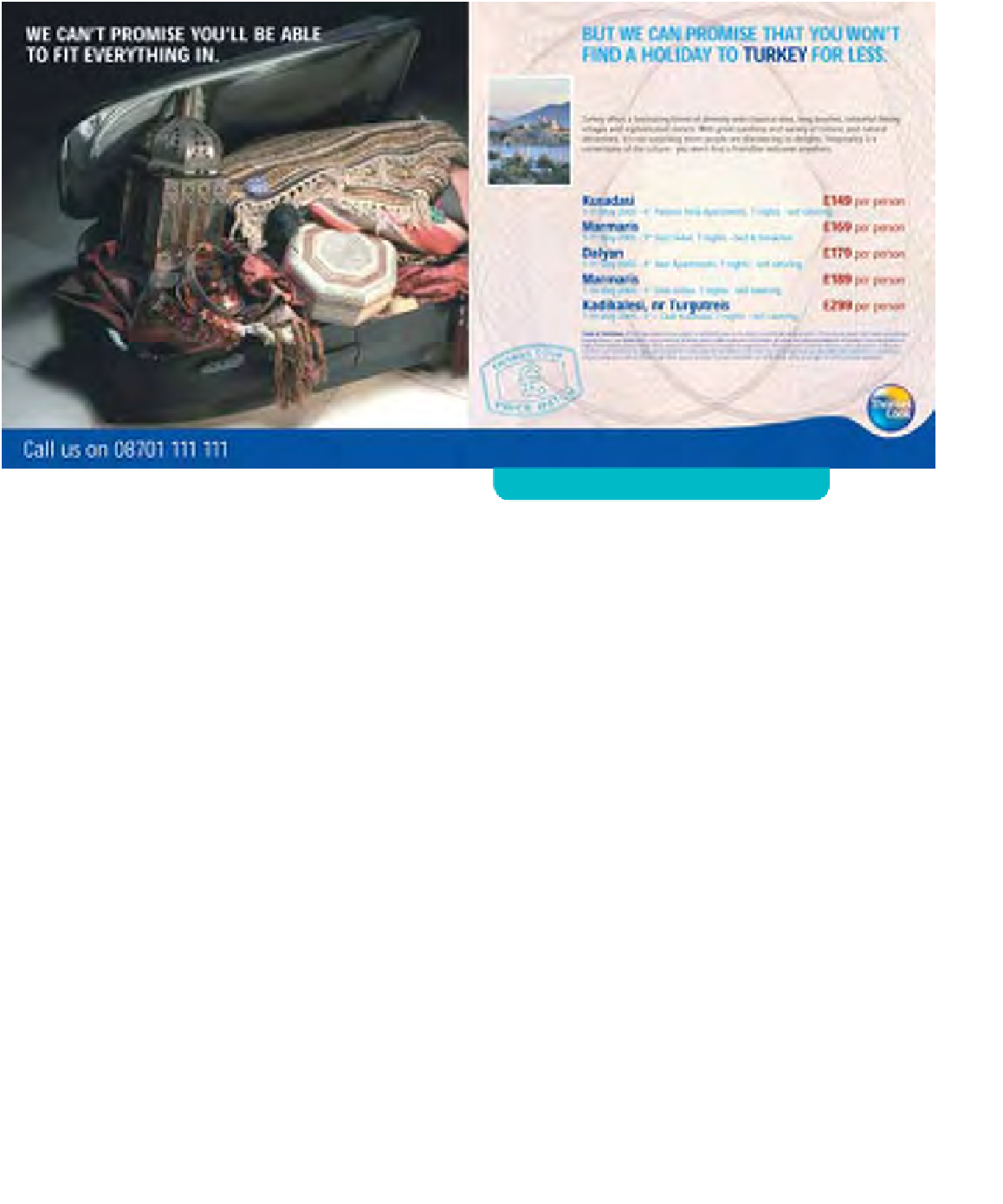Travel Reference
In-Depth Information
Fig 5.5 - Price matching at Thomas Cook
Pricing strategies
From the many different pricing strategies used by
travel and tourism businesses, the following are some
of the most common:
known as a 'loss leader'). Many of the low-cost
airlines, such as Ryanair and easyJet, use this
technique to win customers from traditional airlines.
It is important that this pricing method is seen as
a long-term strategy since customers will resent an
early rise in price;
•
Skimming - this is when a high price is charged
initially for a new product that is unique and that
attracts people who are willing to pay the high
price for status reasons. The pricing of exclusive
hotels and luxury cruises are examples of market
skimming;
•
Competitive pricing - sometimes referred to as 'the
going rate', competitive pricing assumes that where
products or services are similar, the organisation will
charge the going rate, i.e. will match the price of its
competitors. This method often leads to very low
profi t margins and, in the long run, can lead to the
collapse of some organisations, e.g. tour operators,
who fi nd that they can't make enough profi t to
survive;
•
Cost-plus pricing - sometimes known as 'accountant's
pricing', this is the rather simplistic approach that
totals all fi xed costs (buildings, equipment, etc.)
and variable costs (wages, energy costs, telephone,
etc.) and adds a small profi t margin to arrive at the
price to charge. This method fails to take account of
fl uctuating levels of demand and what competitors
are charging;
•
Variable pricing - when different prices are charged
according to season, time of day, types of customers
(groups, young people, senior citizens, single
parents, etc.) and facilities on offer. Discounting can
also be used to stimulate demand, e.g. price cuts
on holidays (see Figure 5.5).
•
Penetration pricing - this is used by organisations
wanting to get into a new market where there are
existing suppliers of the same product or service.
The price will be set suffi ciently low to persuade
customers to switch their allegiance (sometimes









































































